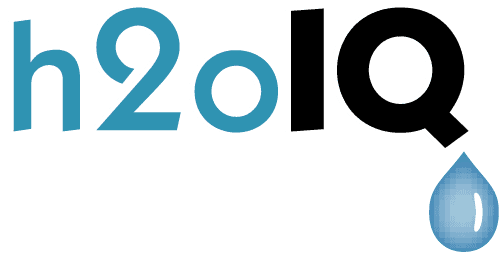When learning about the water supply, it’s easy to get overwhelmed with information. And sometimes that info causes concern. Or it’s just too much, our eyes glaze over, and the attention wanders…
We recommend a middle path: try not to over-react or to under-react — and don’t let emotion and subjective beliefs or fears outweigh the objective facts in evidence. Be willing to take a dispassionate, deep dive into the facts and to interpret what they mean in a given situation.
For any water source, it can be helpful to consider:
- What is in the water — such as natural or human-introduced minerals, pollutants, sediment, organic or biological matter… anything that can be detected by reliable water-testing procedures.
- How healthy or risky it might be — at what levels do any of the substances found in the water become harmful to humans, animals, even vegetation?
- Are the substances and other characteristics of concern naturally occurring or have they been introduced by human activity? Does this matter in a given situation?
- What lies between the place where the water was tested and the actual taps, faucets, and shower heads — or recreational and agricultural waterways — you’re interested in? It’s always better to focus on tests performed as close as possible to the points of concern.
Understanding Water-Test Results
On the lower end, consumer-grade water-quality test kits may be of varying reliability, and may test for only a few things. More-comprehensive (and costly) tests provide information about, perhaps, dozens of aspects of a water sample — up to and including the battery of tests performed to get the level of detailed data recorded by the United States Geological Survey (USGS), for example.
The unabridged results of a comprehensive water test can be daunting to the layman. They can also be very revealing. At times, it can seem as if they raise more questions than they answer. But we hold firm to the belief that knowledge is power, and that more knowledge helps us to make better decisions.
Reference Material
- USGS Water Science Glossary of Terms
- USGS Water Science School’s list of naturally occurring and human-induced Contaminants Found in Groundwater
- National Water-Quality Assessment (NAWQA) Program’s Glossary
Partial (but growing) Glossary of Terms
305(b)
“Refers to section 305 subsection (b) of the Clean Water Act. 305(b) generally describes a report of each state’s water quality, and is the principle means by which EPA, Congress, and the public evaluate whether US waters meet water quality standards, the progress made in maintaining and restoring water quality, and the extent of the remaining problems.” [US EPA Vocabulary]
characteristic
[AKA “substance” at this site. —ed.]
“Characteristic names identify different types of environmental measurements. The names are derived from the US EPA Substance Registry System (SRS). USGS uses parameter codes for the same purpose and has associated most parameters to SRS names.” [types and names of substances]
drainage basin
“…also known in North America as the watershed and, in British English, as a catchment…”
fertilizer
See nitrate.
HUC
The unique USGS Hydrologic Unit Code used to identify a watershed: “Hierarchical subdivision of land area of United States based on hydrology. A unit is a geographic area representing part or all of a surface drainage basin, a combination of drainage basins, or a distinct hydrologic feature. Almost all cataloging units are larger than 1800 sq km except in special circumstances. Approximately 50% of units at any level correspond to “true” watersheds.” [US EPA Vocabulary]
Maximum Contaminant Level (MCL)
A legally permitted limit requiring public utilities to test their water and, if needed, install filters to lower the level of the chemical. Often not known or not in the law. [ed: clarification needed]
nitrate
A chemical pollutant often associated with agricultural fertilizer. Water agencies are installing real-time nitrate sensors to keep a close watch on this specific substance, and the USGS provides a map of such sensors.
nutrient
Element or compound essential for animal and plant growth. Common nutrients in fertilizer include nitrogen, phosphorus, and potassium.1
PCBs
Polychlorinated biphenyls (PCBs), a mixture of chlorinated derivatives of biphenyl, marketed under
the trade name Aroclor with a number designating the chlorine content (such as Aroclor 1260). PCBs were used in transformers and capacitors for insulating purposes and in gas pipeline systems as a lubricant. Further sale for new use was banned by law in 1979.1
pesticide
A chemical applied to crops, rights of way, lawns, or residences to control weeds, insects, fungi, nematodes, rodents or other “pests.”1
sediment
Particles, derived from rocks or biological materials, that have been transported by a fluid or other natural process, suspended or settled in water.1
substance
Any chemical, biological organism, physical property or miscellaneous object tracked or regulated by an EPA program or identified in an environmental statute.2 Also see characteristic.
turbidity
Turbidity is the measure of relative clarity of a liquid. It is an optical characteristic of water and is an expression of the amount of light that is scattered by material in the water when a light is shined through the water sample. [The USGS Water Science School]
watershed
Watershed Definitions for Streams: “A region or area bounded peripherally by a water parting and draining ultimately to a particular watercourse or body of water.” Common to apply definition at confluences. Definition is hydrologic but typical to use terrain elevation to define watershed boundaries. Definition applies to any point on a stream network.” Also see HUC, drainage basin. [US EPA Vocabulary]
1. Defined in Glossary by National Water-Quality Assessment (NAWQA) Program’s Glossary.
2. A substance in the USA EPA’s Water Data for the Nation system is any chemical, biological organism, or physical property that is tracked or regulated by an EPA program or identified in an environmental statute.

